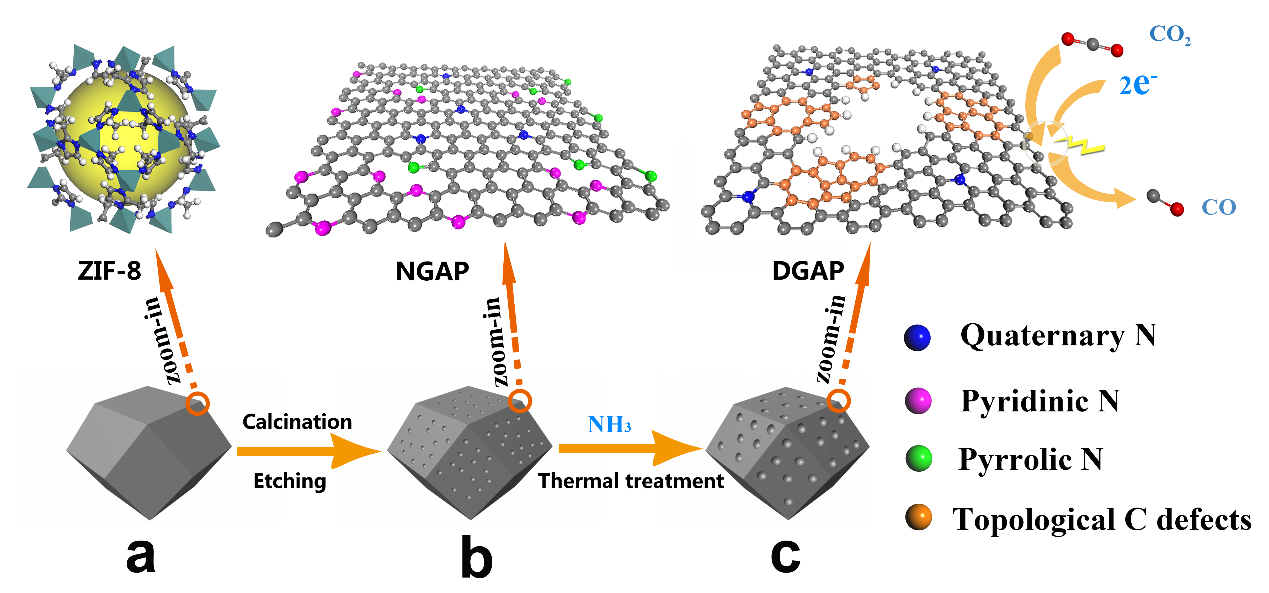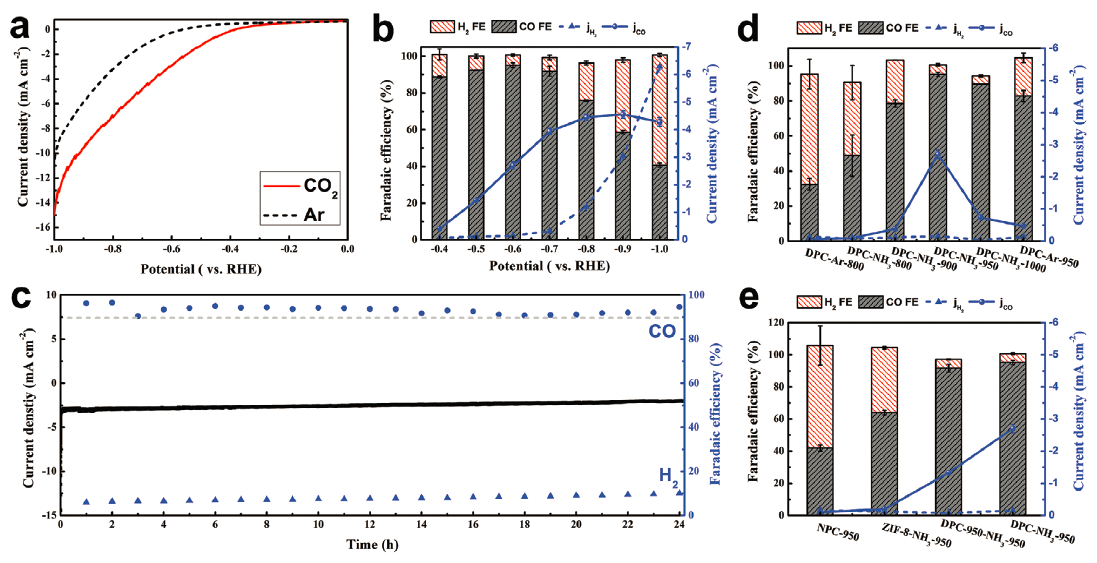A research group led by Prof. CHEN Liang at the Ningbo Institute of Materials Technology and Engineering (NIMTE) of the Chinese Academy of Sciences (CAS), has developed a novel and facile ammonia thermal-treatment strategy for synthesizing 3D topologically defected porous carbon (DPC) particles as efficient electrocatlaysts for carbon dioxide reduction reaction (CO2RR). The findings were published in Advanced Materials (Adv. Mater.).
As a promising strategy to alleviate global warming, the renewable-energy-powered electrocatalytic CO2RR has attracted increasing attention, since it can generate value-added carbon chemicals from the captured CO2. In practice, it still remains challenging to developing highly active CO2 reduction electrocatalysts toward relevant industrial requirements still remains a challenge.
Topological defects are expected to locally tune the intrinsic catalytic activity of carbon materials, thanks to its asymmetric local electronic redistribution. However, owing to the high formation energy, deliberately creating high-density homogeneous topological defects in carbon networks still remains a bottleneck.
Through selectively removing pyrrolic-N and pyridinic-N dopants from N-enriched porous carbon particles via elevating temperatures in ammonia atmosphere, researchers at NIMTE successfully created high-density topological carbon defects.
The resultant topological defects were systematically investigated by near-edge X-ray absorption fine structure measurements and local density of states analysis, and the defect formation mechanism is revealed by reactive molecular dynamics simulations.
The as-prepared porous carbon materials showed an enhanced electrocatalytic CO2 reduction performance, yielding a current density of 2.84 mA cm-2 with a Faradaic efficiency (FE) of 95.2 % at -0.6 V versus reversible hydrogen electrode (RHE) in 0.1 M CO2-saturated KHCO3 electrolyte, which is among the best performances reported for metal-free CO2 reduction electrocatalysts.
Density Functional Theory (DFT) calculations confirmed the key role of 5-member ring C defects in CO2 reduction.
The study has not only presented deep insights for the defect engineering of carbon-based materials, but also enhanced the understanding of electrocatalytic CO2 reduction on carbon defects.
This work was supported by the “From 0 to 1” Innovative program of CAS (No. ZDBSLY-JSC021), the National Natural Science Foundation (No. 51872306), the Aided Program for Science and Technology Innovative Research Team of Ningbo Municipality (No. 2015B11002 and No. 2016B10005), the Natural Science Foundation of Zhejiang Province (No. LQ19B030002), and the “Science and Technology Innovation 2025” Major Program in Ningbo (No. 2019B10046). The calculations were completed on the supercomputing system in the Supercomputing Center of NIMTE. X-ray absorption near edge structure measurements have been done on the soft X-ray magnetic circular dichroism end station of the National Synchrotron Radiation Laboratory.

Fig. 1 Schematic illustration of the DPC particle synthesis (Image by NIMTE)
+
Fig. 2 The CO2 reduction reaction performance in 0.1 M CO2-saturated KHCO3 electrolyte (Image by NIMTE)
Contact
SU Jianwei
Ningbo Institute of Materials Technology and Engineering
E-mail: sujianwei@nimte.ac.cn

